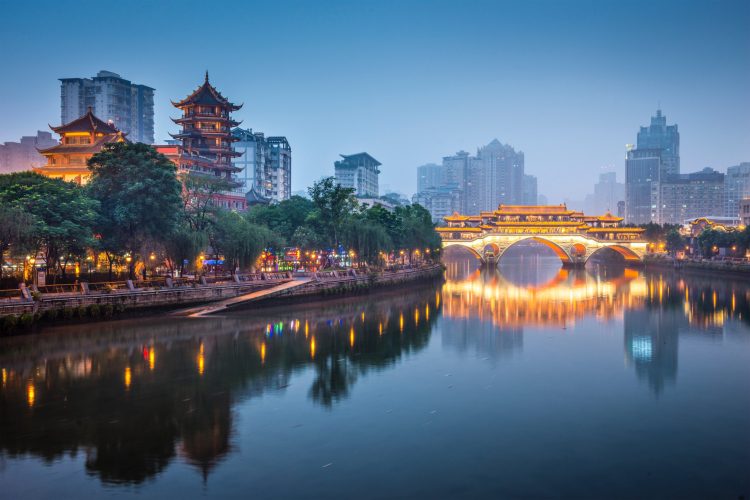A City Seeking Stillness: The Rise of Temple Retreats in the Korean Capital
Seoul may be one of Asia’s most fast-paced cities, but in 2024, the real trend wasn’t another K-beauty launch or Michelin-starred banchan—it was silence. As urban burnout surged among local professionals and global digital nomads, an ancient antidote quietly emerged as the new wellness movement: the Buddhist temple-stay. With over 25 temples in and around Seoul offering immersive, introspective programs, more travelers than ever are trading skyscrapers for sacred halls, conference calls for chanting, and espresso shots for steaming bowls of vegetarian temple fare.
Participation in temple-stay programs spiked by over 40% compared to 2023, according to the Korean Cultural Heritage Administration. Social media detox, mindfulness travel, and slow living—once fringe ideals—are now shaping how people choose to escape. Seoul’s temple-stay scene isn’t just a throwback to spiritual tradition; it’s become a refuge for a generation searching for peace in a screen-drenched world.
Escaping Noise: From Urban Chaos to Monastic Calm
The appeal begins with contrast. Seoul, a city of 10 million, is known for its all-night convenience stores, hyper-connected digital culture, and relentless work ethic. But drive just an hour out of Gangnam, and the environment shifts dramatically—forest-covered slopes, morning mist curling around temple eaves, and the faint chime of a moktak (wooden gong) calling participants to meditation. Whether nestled in Bukhansan’s foothills or hidden behind a palace wall in central Jongno, these Buddhist temples offer something city life increasingly fails to provide: stillness.
The most popular programs in 2024 were weekend silent retreats, where participants surrendered their phones at check-in and embraced monastic routines—early wake-ups at 4:30 AM, seated meditation, sunmudo martial arts, and tea ceremonies led by resident monks. While this may sound austere, the structure itself became part of the healing. For travelers overwhelmed by choice and digital noise, the simplicity of temple life felt like an emotional balm.
Temple-stays at Jogyesa, Bongeunsa, Hwagyesa, and Geumsunsa saw record attendance from both Koreans and international guests. Many cited mental fatigue, loneliness, and the desire for “real reconnection” as motivators. In a world where notifications never stop, nothing feels more revolutionary than being unreachable.
The Power of Ritual: Chanting, Bowing, and Zen Cooking
What drew so many travelers in 2024 wasn’t just the promise of quiet, but the immersive ritual of temple life. Mornings began with yebul, a pre-dawn chanting ceremony where monks and guests intone sacred verses together. In the candlelit hall, the rhythm of voices and the scent of incense create a sensory anchor to the present moment. Following this, practitioners engage in 108 prostrations—bows that stretch and humble the body, reinforcing gratitude and letting go of ego.
Mid-morning offers a new form of mindfulness: cooking. Unlike typical cooking classes, temple cuisine focuses on preparation as a meditative practice. Known as “Barugongyang,” meals are silent and ceremonial, often vegan and deeply seasonal. Participants wash, chop, and serve food without music or conversation, focusing on every motion. Dishes often include fermented radish, sesame-soy greens, and mountain mushrooms, served in minimalist bowls that reflect the Buddhist principle of impermanence.
These rituals serve as a kind of physical therapy for the over-digitized. Every breath, every bite, every bow becomes a way to ground oneself in something real and immediate—an experience hard to find in algorithm-driven city life.
No Phones Allowed: Why Digital Detox Became the Main Draw
One of the most striking features of temple-stays in 2024 was their proud rejection of modern distractions. At most locations, phones were either surrendered upon entry or discouraged entirely. For some, this was a challenge. For others, it was the very reason they came.
Digital burnout was at an all-time high in Korea in 2024, with screen-time tracking apps reporting average daily usage of over 7 hours. Globally, too, the post-pandemic world saw a growing wave of “techno-fatigue,” especially among Gen Z and millennial travelers. Temple-stays offered a rare break—a no-excuses invitation to unplug.
Guests often reported that the first 24 hours without their devices were the hardest. But after that, many described a surprising sense of lightness, focus, and emotional clarity. Instead of scrolling before bed, they journaled. Instead of reacting to pings and posts, they watched the moon rise in stillness. This digital fasting didn’t just free up time—it reawakened their senses and attention spans.
By the time participants re-entered the city, they reported being more grounded, more intentional, and more resistant to the digital whirl that had previously overwhelmed them.
A Diverse Audience: From Korean Office Workers to Global Nomads
Unlike the image of temple retreats as austere or religious-only, the 2024 wave of temple-stay participants was remarkably diverse. Korean office workers, burned out from long workweeks and endless Zoom calls, made up a large portion of weekday visitors. International travelers—particularly from the US, Germany, Singapore, and Australia—filled weekend slots, many inspired by social media posts or wellness influencers documenting their own journeys of introspection.
These participants weren’t necessarily Buddhist, nor were they spiritual seekers in the traditional sense. Many were simply people seeking clarity—writers on deadline, entrepreneurs in burnout cycles, or travelers craving more than photo-ops. Seoul’s temple programs welcomed them all with the same invitation: step away from the noise and come home to your breath.

For LGBTQ+ travelers, solo female adventurers, and older travelers too, temple-stays were seen as safe, inclusive, and deeply humanizing. There was no dress code beyond modesty, no requirement for belief, just respect for the space and fellow participants.
The Emotional Impact: What Temple-Stayers Took Home
What guests took home wasn’t a souvenir or even a certificate. It was a shift in perspective. Many described subtle but powerful changes—an improved relationship with time, a newfound appreciation for silence, or the ability to handle stress with more awareness. Others reported feeling physically healthier, emotionally steadier, and more creatively inspired.
Some began integrating temple rituals into their daily lives after returning home. One freelance designer from London now starts each workday with 10 minutes of meditation. A Seoul-based journalist who hadn’t been able to sleep properly in months began journaling before bed, inspired by the evening reflections she wrote at Geumsunsa. These small shifts proved more impactful than any spa weekend or overseas resort stay.
In a culture increasingly obsessed with optimization, productivity, and social visibility, temple-stays offered a radical alternative: doing less, going inward, and embracing quiet. That’s what made them so powerful—and why they’ll likely stay relevant long after the trend cycle passes.
Looking Ahead: Temple-Stay Programs Evolve in 2025
Seeing the demand surge, temples have begun refining their offerings for a post-pandemic, globally curious audience. Some now offer bilingual instruction, specialized programs for families, or themed retreats focused on grief, creativity, or self-compassion. A handful have even begun partnerships with wellness apps that allow participants to continue mindfulness practices after their stay—ironically, using the same phones they were asked to surrender upon arrival.
Yet even as these programs evolve, their core remains unchanged: silence, simplicity, ritual, and respect for the present moment. That’s what makes them timeless.
As Seoul continues to grow as a hyper-modern city, its temples now play a dual role: as cultural touchstones and as sanctuaries for those looking to disconnect, detox, and begin again.





















